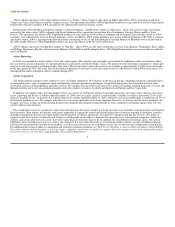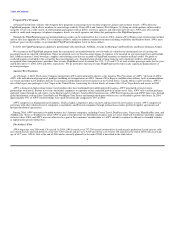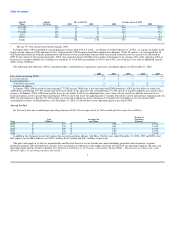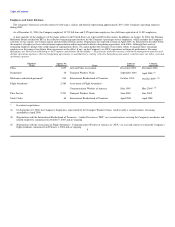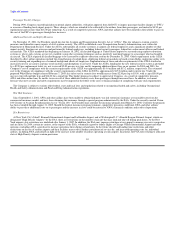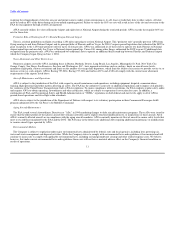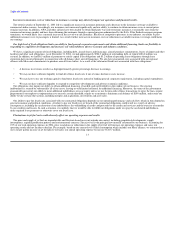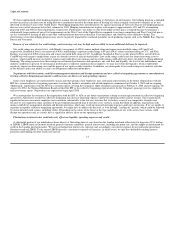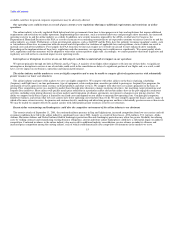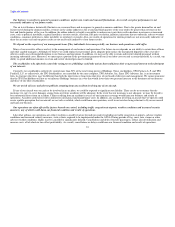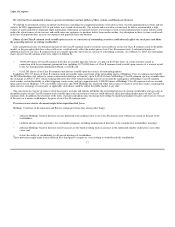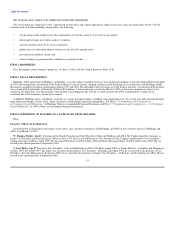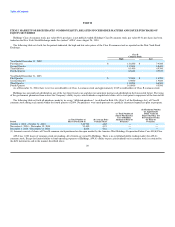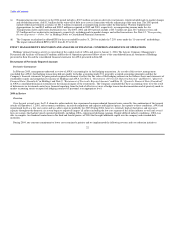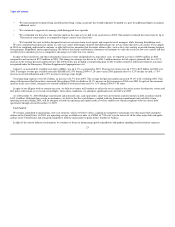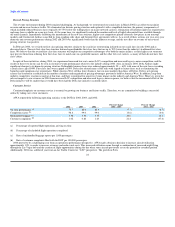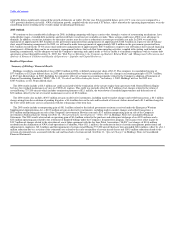US Airways 2004 Annual Report Download - page 18
Download and view the complete annual report
Please find page 18 of the 2004 US Airways annual report below. You can navigate through the pages in the report by either clicking on the pages listed below, or by using the keyword search tool below to find specific information within the annual report.
Table of Contents
available cash flow for general corporate requirements may be adversely affected.
Our operating costs could increase as a result of past, current or new regulations that impose additional requirements and restrictions on airline
operations.
The airline industry is heavily regulated. Both federal and state governments from time to time propose new laws and regulations that impose additional
requirements and restrictions on airline operations. Implementing these measures, such as aviation ticket taxes and passenger safety measures, has increased
operating costs for us and the airline industry as a whole. In addition, new security measures imposed by the ATSA, or otherwise by Congress, the
Department of Homeland Security or the FAA as a result of concern over continuing terrorist threats are expected to continue to increase costs for us and the
airline industry as a whole. Furthermore, certain governmental agencies, such as the DOT and the FAA, have the authority to impose mandatory orders, such
as Airworthiness Directives in connection with our aircraft and civil penalties for violations of applicable laws and regulations, each of which can result in
material costs and adverse publicity. For example, the FAA from time to time may require us to retrofit our aircraft to meet enhanced safety standards.
Depending on the implementation of these laws, regulations and other measures, our operating costs could increase significantly. We cannot predict which
laws, regulations and other measures will be adopted or what other action regulators might take. Accordingly, we cannot guarantee that future legislative and
regulatory acts will not have a material impact on our operating results.
Interruptions or disruptions in service at one our hub airports could have a material adverse impact on our operations.
We operate primarily through our hubs in Phoenix and Las Vegas. A majority of our flights either originate or fly into one of these hubs. A significant
interruption or disruption in service at one of our hubs could result in the cancellation or delay of a significant portion of our flights and, as a result, could
have a severe impact on our business, operations and financial performance.
The airline industry and the markets we serve are highly competitive and we may be unable to compete effectively against carriers with substantially
greater resources or lower cost structures.
The airline industry and most of the markets we serve are highly competitive. We compete with other airlines on the basis of pricing, scheduling
(frequency and flight times), on-time performance, type of equipment, cabin configuration, amenities provided to passengers, frequent flyer programs, the
automation of travel agent reservation systems, on-board products and other services. We compete with other low cost carriers primarily on the basis of
pricing. Price competition occurs on a market-by-market basis through price discounts, changes in pricing structures, fare matching, target promotions and
frequent flyer initiatives. Most airlines will quickly match price reductions in a particular market and certain airlines have in the past engaged in retaliatory
activities, including steep pricing discounts in certain markets and termination of alliance agreements, in response to changes in our pricing structure. Our
ability to compete on the basis of price is limited by our fixed costs and depends on our ability to maintain low operating costs. Our principal competitor,
Southwest Airlines, and certain other low cost carriers have lower operating cost structures than we do. We also compete against the legacy carriers, many of
which offer more extensive routes, frequencies and customer loyalty, marketing and advertising programs and have substantially greater resources than we do.
We may be unable to compete effectively against carriers with substantially greater resources or lower cost structures.
Recent airline restructurings and bankruptcies could alter the competitive environment of the airline industry to our detriment.
The terrorist attacks of September 11, 2001, the continued military presence in Iraq and Afghanistan, increased competition from low cost carriers and soft
economic conditions have led to the airline industry's significant losses since 2001. Largely as a result of these losses, ATA Airlines, U.S. Airways, Aloha
Airlines, Hawaiian Airlines and United Airlines filed for bankruptcy protection. Because bankruptcy protection may allow for greater flexibility in reducing
costs by voiding contracts and renegotiating existing business obligations, current and future airline bankruptcies could have a substantial impact on industry
competition. Continued weakness in the airline industry also may result in additional industry consolidation, greater reliance on industry alliances and
increased price competition among the existing airlines, each of which could dramatically alter competitive environments in the markets we serve.
15


